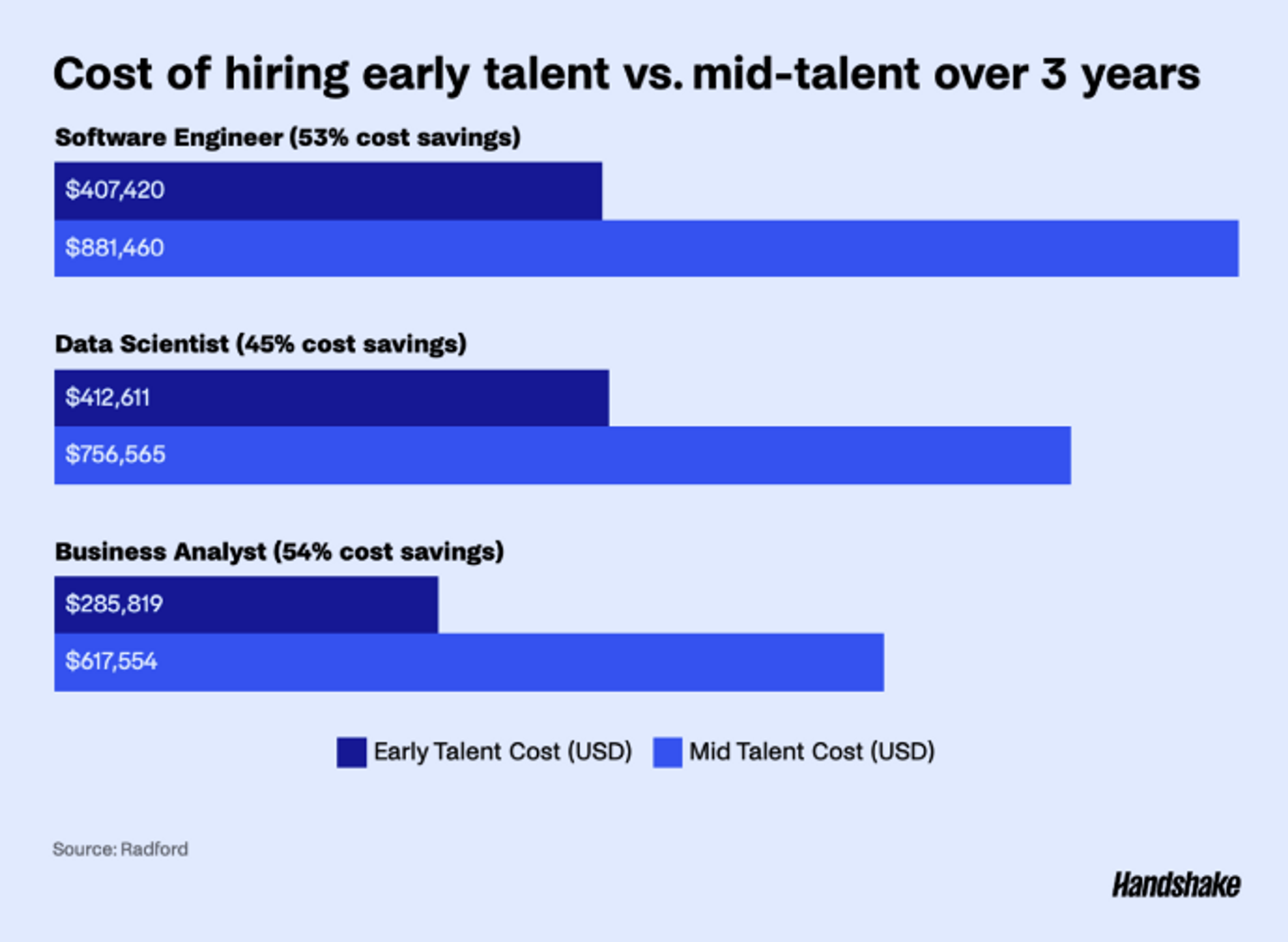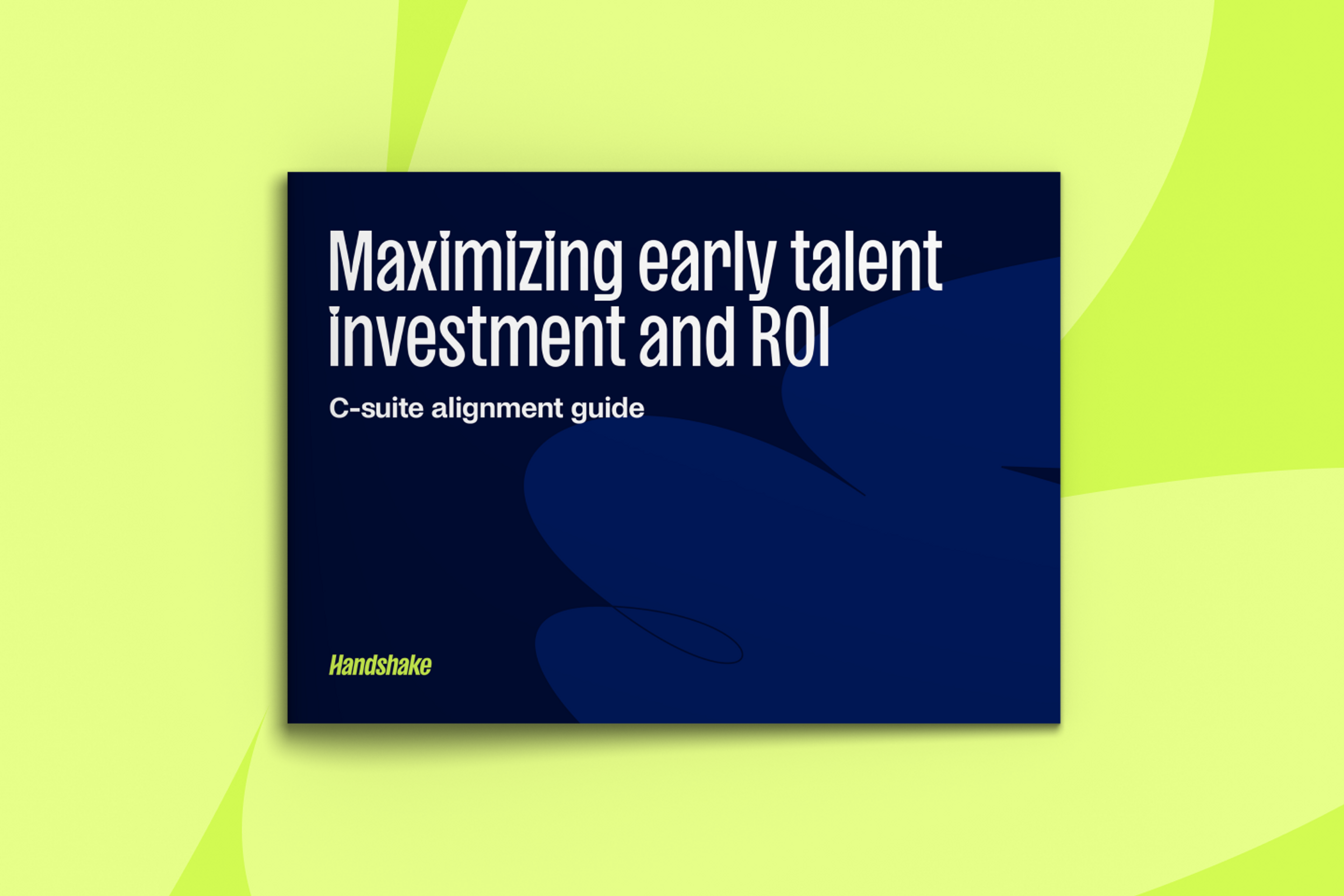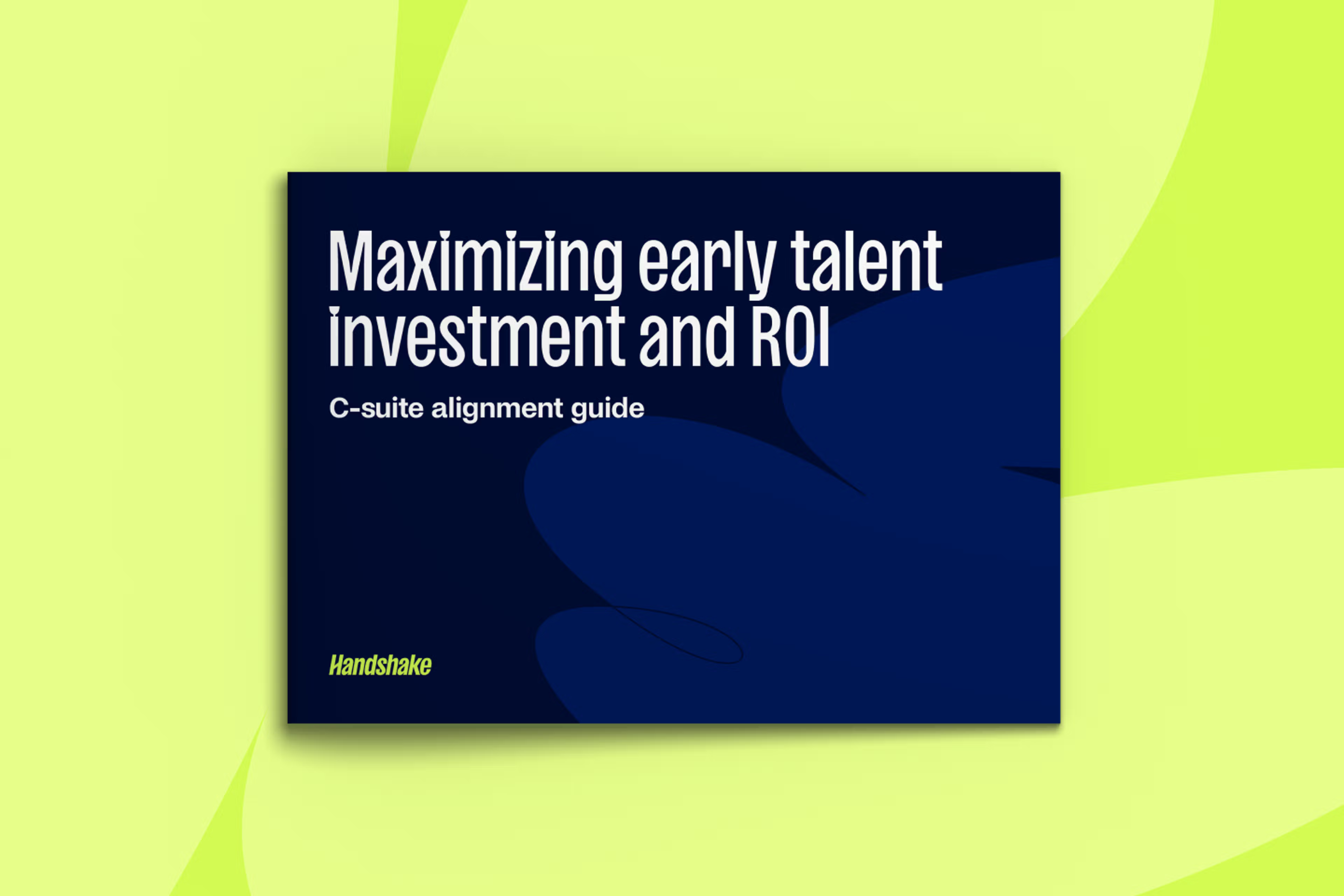Talent acquisition is top of mind for every executive.
- Workforce management is one of the top 3 priorities of CEOs—so the pressure for you to deliver results is on.
- And as budget scrutiny grows, your CFO needs data-driven partners to best invest in building a resilient organization.
- Meanwhile, the CIO and CTO are inundated with increasing demands and a tech talent shortage.
With a tough global economy and looming strategic business threats that all center around workforce management, here’s how campus recruiting teams can frame the business case for early talent with your C-suite.
Recruiting early talent can save our organization money
In today’s unpredictable economy, we all need to know the bottom line:
How much does it cost, and how much return will we get on our investments?
Handshake’s research found that when it comes to tech talent in particular, hiring early talent cuts costs for organizations by 45-54% over 3 years.

But what if you don’t have quantitative data yet for your organization? Some change management is required, especially when leaders believe hiring experienced or mid-level talent will save time and money because they assume it will shorten ramp time.
In a recent Handshake InnovationXchange executive round table on this topic, David Jordan, CFO of Americas, TD SYNNEX, shared that the cost to acquire and pay recent grads is as much as 50% lower than that of more experienced hires. He expanded, “In my experience, companies can’t expect cost savings on the onboarding and ramp-up time for moderately more experienced hires. Both [mid-talent and early talent] need to learn the company, culture, and business before they can be effective.”
During Handshake Access, we expanded on this topic. Watch the clip and read the full recap from his session:
In the face of labor gaps and shortages, hiring skilled early talent and investing in employee development can reap fiscal and cultural benefits for any organization.
We can get the best candidates with less work (and less time)
When every department needs to do more with fewer resources, talent teams can help fill workforce gaps and pipelines faster, smarter, and more efficiently.
The key? Target a broad but highly specific talent pool.
Since emerging talent are just building their professional networks, they rely heavily on schools, alums, and digital job sites to get their jobs. Handshake survey data revealed that 78% of Gen Z job seekers say that digital job networks are their primary job-seeking tool. This makes your investment in a platform they trust valuable because you can quickly target this wide talent pool.
For example, there are 13M+ Gen Z job hunters on Handshake right now, so it’s quick and easy to access and engage the exact talent you need.
By improving your talent targeting, you can waste less time screening out talent that doesn’t fit your needs or manually recruiting for opportunities. Handshake gives you the search, branding, and outreach tools you need to find, engage, and hire not just any talent but the right talent in one place so you can effectively lower cost-per-hire and time-to-hire.
This level of precision at scale isn’t possible on other, later-career platforms. It allows you to cut waste from other areas of your talent strategy so you can focus your investments on attracting qualified applications.
Learn more:
- 8 more ways to save time recruiting early talent on Handshake.
- How McDonald’s team of 4 used Handshake to expand their talent pool from 15 universities to 470+ and almost tripled their qualified applications.
Early talent career pathways boost loyalty and retention
Between the knowledge that 1 in 5 Americans will reach retirement age by 2030 and 27% of the workforce will be Gen Z by 2025—the looming threat of knowledge loss and skills gaps is top of mind for the C-suite.
Investing in your early talent pipeline isn’t just about next quarter’s numbers; it’s about giving your company a strategic talent advantage and positioning your organization to compete, win, and thrive not just this year but for the next 5-10 years. That type of long-term strategic thinking truly resonates and empowers you to go from reactive to proactive.
“Growing our future leaders is the prudent long-term investment. Developing students through our programs fill our workforce pipeline with high-quality talent who already understand our client’s needs and share our values. As a result, they tend to be more engaged, get promoted faster, and stay longer.” - Jamie K, Senior Campus Team Manager for Talent Acquisition at Schwab
A recent Handshake study found that Gen Z workers will stay at a company for over twice as long (approximately 6.5 years vs. 3 years) if presented with upskilling, growth, and advancement opportunities. In addition, the same study found that 71% of Gen Z talent now expects to be promoted within 18 months of hiring. Understanding and communicating this allows you to align your organization’s early talent strategy with Gen Z in a way that attracts, retains, and wins more talent.
Solve your executive's workforce challenges with a healthy early talent pipeline
By building your early talent pipeline around skills rather than experience and creating space for young hires to grow, advance, and develop their upward careers within your organization, you also help your organization slay the retention dragon.
To help up-level your next conversation with your leadership team about the opportunities that come with investing in early talent, check out our newest ebook:


